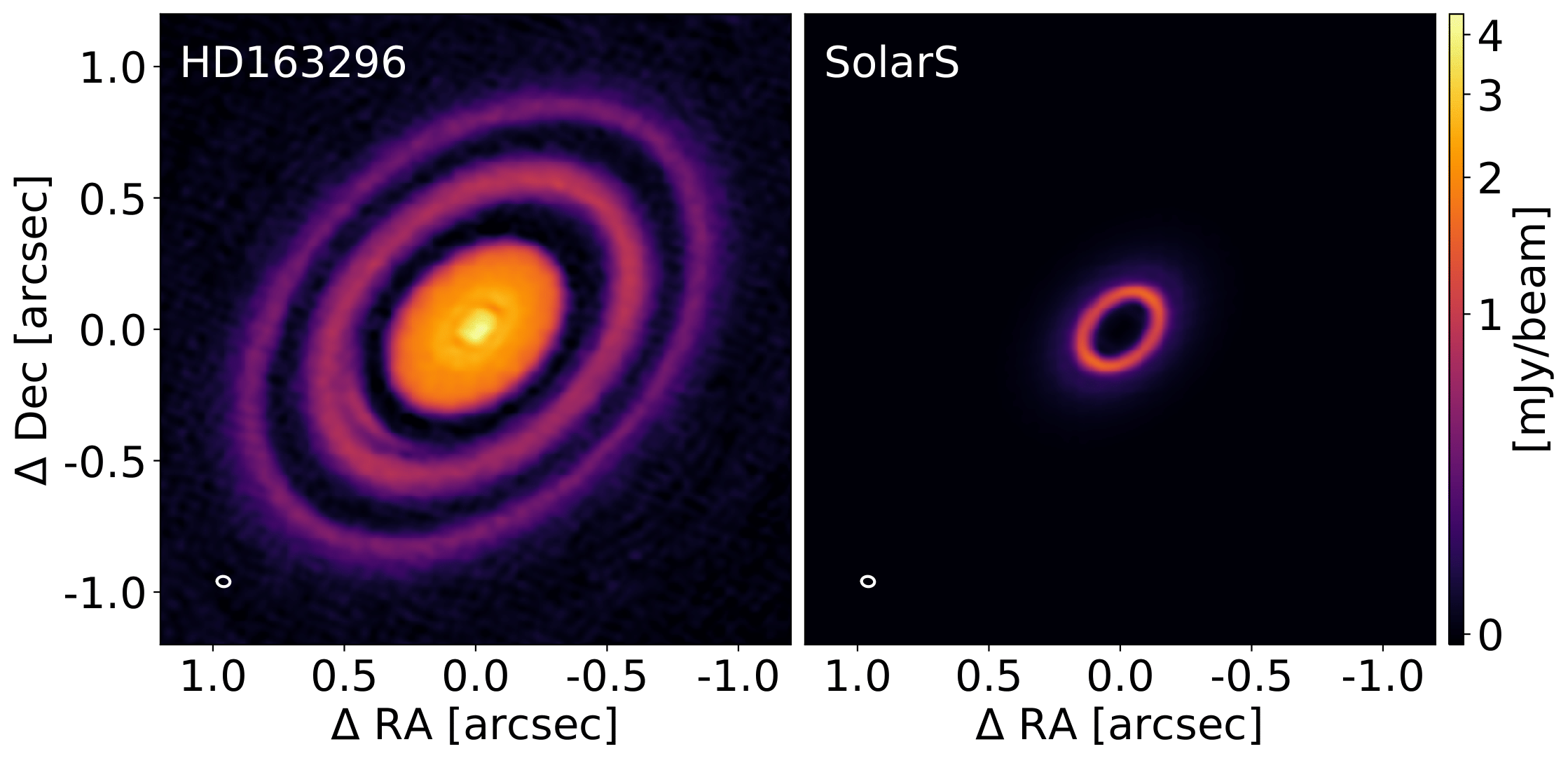SIMIO-continuum is a collection of codes designed to help you compare your radiative transfer images with existing ALMA observations. Please check the documentation and www.nicolaskurtovic.com/simio for a full description of the package.

This git-hub repository contains the codes to run SIMIO-continuum, but it does not include the example "Solar System to HD163296" project, and it does not contain the templates either. You can download the templates from www.nicolaskurtovic.com/simio/templates, and the example project can be downloaded by clicking on the following section.
You can also download the latest SIMIO-continuum in a tar.gz by clicking on this link: simio_v1.2.tar.gz (13.2 MB).
Alternatively, you can download the latest SIMIO-continuum in a tar.gz pre-loaded with the project and template needed to complete the tutorial 1 of the documentation. Click on this link to download it: simio_preloaded_v1.2.tar.gz (387.3 MB).
How would the Solar System have looked if it was located where the HD163296 system is, and it had been observed by ALMA as part of the DSHARP project?
Click here to download this example project: SolarS_HD163296.tar.gz (163.6 MB). After downloading it, untar it in the projects folder, such that the directories have the following order: /path_to_SIMIO/SIMIO/projects/SolarS_HD163296. The template for this project is the DSHARP observation of HD163296, which you can download from this link. After downloading it, untar it in the templates folder, such that the directories have the following order: /path_to_SIMIO/SIMIO/templates/HD163296.
Follow the tutorial 1 to go step by step from model to synthetic observation.

SIMIO-continuum is distributed under the MIT license and can be used, changed and redistributed freely. But we do ask you to provide a reference to SIMIO-continuum when using it. This reference will be posted soon. If no reference has been posted by the time of publishing, please refer the usage of the package to the webpage www.nicolaskurtovic.com/simio.